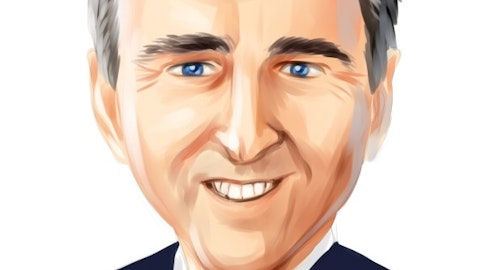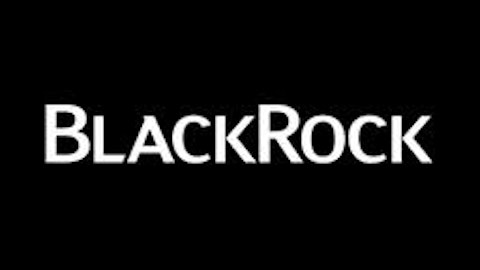Investors oftentimes side with one of the two investment management styles: active or passive. To date, the passive exchange-traded fund industry has skyrocketed, leaving the actively managed ETF market in the dust. But that may soon change. Let’s take a look at the active versus passive debate and how it relates to ETFs. Then we’ll examine what a recently expanded partnership will likely mean for this industry.
Annnd in this corner… passive management
Four decades ago Burton Malkiel wrote A Random Walk Down Wall Street. By doing so, he emerged as the poster child for the notion that active managers are unable to outperform passive indexes over the long run. Ever since, this efficient market hypothesis has birthed an entire industry of passively managed index funds and, more recently, ETFs. It’s also questioned the value of active fund managers.
Many studies have been conducted on this very issue. In Robert Whitehead’s “Active Versus Passive Investing” white paper, he reveals that “from 1984 to 2008, 70% of large cap mutual funds fell short of their benchmarks.” As a result, passively managed investments have gained a lot of recognition — and assets. Passive investments now account for roughly 20% of total invested dollars, split nearly equally between mutual funds and ETFs, and more than 40% of institutional assets.
However, in the same study, Whitehead goes on point out that active large cap equity managers have also enjoyed success in recent years. “Between 1998 and 2007, more than half of them beat the S&P 500. … If one measures performance over the ten-year period beginning in 1997, passive management wins; move forward a year and active management comes out ahead.” So, who’s the real winner — active or passive? It often boils down to what time frame you’re examining.
Also, in his view, “perhaps the most significant drawback of passive management is that it requires the investor to accept the configuration of indexes, however constructed and regardless of the quality of their individual holdings and inherent risks.”
Innovation in ETFs
The main objective of passive investments is to mirror the return of a particular index, like the S&P 500. Trading decisions are based solely on the makeup of that underlying index, with passive ETF managers making no active decisions. Although most ETFs are passively managed, actively managed ETFs are gaining popularity.
Unlike passive ETF managers, active ones have the freedom to trade outside of their benchmark index and may make portfolio and sector allocations changes as they see fit. For better or for worse, this management approach produces returns that don’t always echo the underlying index.
So whatever particular investment philosophy you favor, there’s an ETF style to match it. If you prefer passive management, you’d be more apt to invest in SPDR S&P 500 ETF Trust (NYSEARCA:SPY) or Vanguard Total Stock Market ETF (NYSEARCA:VTI), which are both broad-based, large-cap stock ETFs. On the other hand, if you fall on the side of active management, several actively managed mutual funds now have ETF counterparts.
For example, last year PIMCO opened PIMCO Total Return ETF (NYSEMKT:BOND), an ETF version of bond guru Bill Gross’ wildly popular fund,which boasts over $288 billion in assets. And PIMCO Enhanced Short Maturity Strategy ETF (NYSEMKT:MINT), introduced in 2009, invests in bonds with maturities of one year or less, designed for investors who need liquidity. If these ETFs garner anything close to the esteem of their counterpart funds, then it’ll be a huge win for PIMCO. Not to mention an enormous one for the active ETF industry.
Developments in the active ETF space
As with PIMCO, it’s highly likely that financial institutions will turn many more actively managed mutual funds into ETFs. Even though Fidelity has not yet launched them, the mammoth financial services provider is working on a roster of actively managed ETFs. In announcing its recently expanded partnership, Fidelity emphasized that its relationship with BlackRock, Inc. (NYSE:BLK)‘s iShares is limited to passively managed ETF strategies.
But because Fidelity lacks a strong ETF presence itself and BlackRock, Inc. (NYSE:BLK)’s efforts at running actively managed funds have been lackluster, this courtship seems destined for an ETF marriage made in heaven. With Fidelity’s vast lineup of actively managed funds, a more extensive BlackRock, Inc. (NYSE:BLK) partnership could one day birth active ETFs modeled after already popular Fidelity funds.
Foolish bottom line
By no means is the active versus passive argument over. One style doesn’t emerge a clear winner that completely eliminates the need for the other. As the debate continues, ETF providers are catering to you, regardless of which side of the argument you fall on.
The article Why More Actively Managed ETFs Will Emerge originally appeared on Fool.com and is written by Nicole Seghetti.
Fool contributor Nicole Seghetti has no position in any stocks mentioned. Follow her on Twitter @NicoleSeghetti. The Motley Fool recommends BlackRock.
Copyright © 1995 – 2013 The Motley Fool, LLC. All rights reserved. The Motley Fool has a disclosure policy.



